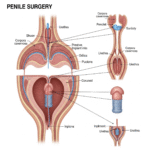Gynecomastia surgery is a medical procedure that addresses the enlargement of male breast tissue, a condition commonly caused by hormonal imbalances, puberty, aging, certain medications, or steroid use. While often benign, this condition can lead to physical discomfort and psychological distress, making surgical intervention a viable option when lifestyle changes or medication fail to provide relief.

What Causes Gynecomastia in Males?
Gynecomastia is the result of an imbalance between the hormones estrogen and testosterone. When estrogen levels are too high or testosterone levels are too low, breast tissue can grow abnormally in men. The most common causes include:
- Hormonal changes during puberty: Temporary gynecomastia is common in adolescent boys and usually resolves within six months to two years.
- Aging: Hormonal shifts in older men can lead to breast tissue growth, especially when combined with weight gain.
- Medication side effects: Certain drugs like antidepressants, anti-anxiety medications, heart medications, or chemotherapy agents can trigger gynecomastia.
- Anabolic steroid use: Athletes and bodybuilders who use steroids may experience hormone disruption leading to breast tissue development.
- Health conditions: Issues such as liver disease, kidney failure, or tumors affecting hormone-producing glands may contribute.
When Does Gynecomastia Require Surgery?
Is Surgery the Only Treatment for Gynecomastia?
In many cases, gynecomastia can resolve on its own, particularly in teenagers. However, if the condition persists beyond two years, becomes painful, or causes significant embarrassment, gynecomastia surgery may be the most effective treatment option. This procedure involves liposuction to remove excess fat or excision to remove glandular tissue, depending on the severity of the case.
Before surgery is considered, doctors may evaluate hormone levels, review medications, and recommend lifestyle changes such as weight loss and exercise. If these measures fail to reduce breast size, surgical intervention becomes necessary.
What to Expect During Gynecomastia Surgery?
How Is Gynecomastia Surgery Performed?
The surgery is typically performed under local or general anesthesia and can take 1–2 hours. Surgeons may use liposuction, excision, or a combination of both techniques to restore a flatter, firmer chest contour. The incisions are usually small and placed around the areola or under the breast fold for minimal scarring. In cases of severe gynecomastia, excess skin may also be removed.
What Is the Recovery Process Like?
Most patients return to light activities within a week, while strenuous exercises are typically avoided for 3–4 weeks. Compression garments are recommended to reduce swelling and support healing. Results are often noticeable immediately but improve over several months as swelling subsides.
What Is the Cost of Gynecomastia Surgery?
How Much Does Gynecomastia Surgery Cost?
The gynecomastia surgery cost varies widely depending on geographic location, surgeon expertise, clinic reputation, and whether the procedure involves liposuction, tissue excision, or both. On average, the cost ranges between $3,000 and $7,000. This price may not include additional expenses such as anesthesia, medical tests, and post-operative garments.
Health insurance typically does not cover cosmetic procedures unless gynecomastia causes significant physical pain or is associated with other medical conditions. Patients should request a detailed quote and confirm what is included in the total cost before proceeding.
Is Gynecomastia Surgery Safe and Effective?
What Are the Risks and Success Rates?
Like all surgical procedures, gynecomastia surgery carries some risks, including infection, scarring, asymmetry, changes in nipple sensation, and fluid accumulation. However, complications are rare when performed by a board-certified plastic surgeon. Most patients report high satisfaction with the results, including improved body image and self-confidence.
Selecting an experienced surgeon who follows strict hygiene protocols is essential. Checking patient reviews and before-after photos can also offer insights into the expected outcomes.
Can Gynecomastia Be Prevented?
How Can You Reduce the Risk of Developing Gynecomastia?
Although some causes of gynecomastia are beyond control, such as aging or genetics, certain preventative measures can help reduce the risk:
- Avoid the use of anabolic steroids and recreational drugs.
- Limit alcohol intake.
- Maintain a healthy weight through diet and exercise.
- Discuss any side effects with your doctor before starting new medications.
Men undergoing gynecomastia surgery should also be informed about procedures like breast lift or penile implants, especially if they are seeking overall body enhancement or dealing with related conditions. Consulting with a specialized clinic can help customize a comprehensive treatment plan based on individual goals.
Is Gynecomastia Surgery Right for You?
Gynecomastia can impact both physical and emotional well-being, but it’s a condition that can often be treated successfully. If persistent male breast enlargement is affecting your confidence, lifestyle, or comfort, consult a qualified plastic surgeon to determine whether gynecomastia surgery is appropriate for your case.
With advancements in surgical techniques and personalized care, men have more options than ever to regain confidence in their appearance. From understanding the underlying causes to exploring effective solutions, taking the right steps early can lead to long-term improvement in both health and self-esteem.



